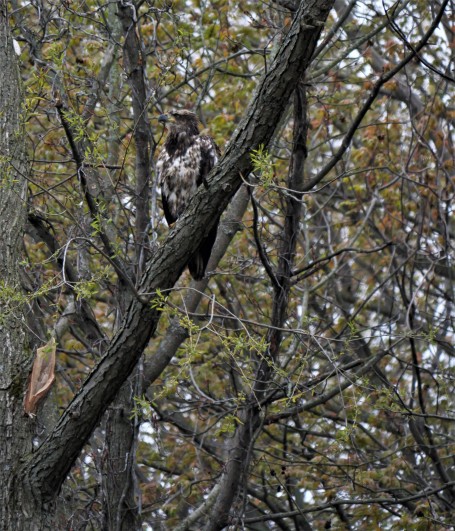
What is this, some sort of magic?
No, it’s not magic at all. In fact, it’s something that’s been around for a while.
The Big Three camera makers, though, are just beginning to catch on to it and are now putting it in their newer cameras — you can buy these if you like, but it will cost you big time — be prepared to upgrade and spend a thousand or two. . .
But you really don’t have to! It’s available elsewhere for just a few hundred bucks. So, what is it about the seldom-talked-about Olympus, Panasonic, Fuji, and Ricoh (makers of the Pentax brand) camera bodies that prompted The Big Three to make these changes to their best-selling line-ups?
Simple.
 It’s five-axis in-body stabilization, or IBIS if you prefer photographer short-cut lingo. And it’s available, even in entry-level camera bodies, for only $499.00 plus tax. That is what American buyers pay for a brand-new Olympus OM-D EM-10iii. I saved even more on mine, because I paid $336 for a lightly used body that is quickly becoming my favorite.
It’s five-axis in-body stabilization, or IBIS if you prefer photographer short-cut lingo. And it’s available, even in entry-level camera bodies, for only $499.00 plus tax. That is what American buyers pay for a brand-new Olympus OM-D EM-10iii. I saved even more on mine, because I paid $336 for a lightly used body that is quickly becoming my favorite.
You might be inclined to scoff at such IBIS nonsense, since lens-based stabilization has been around for years, and it works just fine, thank you very much. But if you do, you would be missing the point. It’s the 5 axes — forward and backward, up and down, and side to side plus a build technology designed to counteract camera shake by balancing the sensor — that permits hand-held low-light photos and “silky water” shots.

Most skilled photographers can hand-hold at 1/20 but, sadly, I am not one of those. However, from what I have read it is fairly standard to advise no hand-holding below 1/60. The 5-axis IBIS found in these other-brand cameras changed all that by adding up to 5 more stops of safe hand-holding!
To be completely honest, there is another factor that contributes to these amazing hand-held results, and that is the weight of your gear. Five-axis in-body stabilization is commonly found on cameras built on the micro (mirrorless) 4/3 system. These cameras are inherently lightweight, much more so than, say, Canon’s entry level Rebel T7, or its mid-range 90d. For example, the Rebel T7 weighs in at 1.48 lbs, the 90d at 2.7 lbs. Compared to the EM-10 iii (0.90 lbs), both DSLRs are really heavy. Attach a wide-angle lens, such as Canon’s 24-70 (2.1 lbs), or a mid-reach lens (Canon 24-300 @3.7 lbs) and you end up with some reallyreallyREALLY heavy gear — 5 lbs or so might not sound very heavy to you, but try holding it steady for a full second or two. Much easier to hoist, point, and hold the just-under-1-lb EM-10 with a Panasonic G Vario 100–300 mm (1.5 lb). That combination weighs half as much as a T7 equipped with a 300mm telephoto and less than than the 90d body alone!

The EM-10 was good enough to capture this heron’s, um, “movement” (look closely at its behind — does this bird have no shame?!)
I love my Canon gear, but I found the EM-10 iii to be packed with features I don’t have on my 77d. That’s because The Big Three reserve these features for their mid-range models. I think the EM-10 compares quite favorably to my Canon 77d, and if I had upgraded to the 90d I might still prefer the lighter, less expensive EM-10. . .but not everyone agrees with me. It did not fare well in an online comparison with the 90d, but it is important to note that the 90d is not considered consumer-grade and besides, it benefits from technology that was not around when the EM-10 was introduced in 2017. Even so, in such important areas as detail, sharpness, weight, and value, the EM-10 held its own. See the results of the comparison here:

In a comparison with Canon’s entry-level Rebel T7, the EM-10 iii did much better. In fact, it did very well on everything except sensor size (it’s smaller) and phase detection (it has none). (Good light with contrast helps when using the CDAF in the EM-10iii — I used the Panasonic 100-300 for this night heron shot.) The smaller MFT sensor may be statistically detrimental, but in actual practice it shouldn’t pose much of a problem — unless you crop your photos significantly or you like to print out large images. Besides, sensor size alone doesn’t determine resolution of the image, there are several other factors at play. This issue (and others) are discussed here,
https://cameradecision.com/compare/Olympus-OM-D-E-M10-Mark-III-vs-Canon-EOS-Rebel-T7

Canon 77d with L series 100-400 and 1.4x. Nice, sharp edges in this low-contrast scene.
I still prefer my Canon gear for birds in flight. The optical viewfinder has none of the lag that is present on some EVFs, and that takes the guesswork out of action shots. So, what you see in the viewfinder is what you get in the final image. And despite its weight, I can handle the camera-plus-lens fairly well, especially if I get a head start on the bird and correctly anticipate its route. It’s not good for small birds, though — for those, I need to tweak my EM-10 or maybe upgrade to an EM-5 iii. The EM-5 has PDAF as well as contrast points, which enables faster, more precise focus. Unfortunately, the EM-10 has only contrast points, which are great for sunny days but make for drab, flat photos on gray days.
Or, I could use the Panasonic Lumix DMC-GX9, another beginner-grade camera that I received as a bonus when I bought a used lens. It, too, has only CDAF, but it uses a proprietary technology that Panasonic calls DFD (Depth from Defocus). Simply put,
It works by examining two images taken with the focus at different distances and analysing their sharpness so that the camera can determine which way and how far to adjust the lens to get the subject sharp. It all happens very quickly so you’re not aware of anything going on.
You can read more about it here,
https://camerajabber.com/panasonic-dfd-focusing-explained/
where you will also be directed to a review of a more sophisticated camera, Panasonic’s GH5.
The camera I have, the GX9, is not bad at all. It, too, is MFT and is both more and less than the Olympus EM-10. For me, the 20 mp sensor more than makes up for having a tilt screen (rather than one that is fully articulated). And there is no GPS. . .but there isn’t any in the EM-10, either. The GX9 also has that wonderful 5-axis IBIS, but what I really like about this camera is its ability to track flying birds or running foxes — that DFD technology really works!

Juvenile eagle (year 1) Panasonic GX9 with 100-300 lens. Cropped.
I started out with a EM5 II. Compare the EM5 III to a EM1 II, aside from the weight (and bluetooth connection which can be done with wifi anyway), the EM1 II wins on everything including price. Unless you will use the features of the EM1 III you can save some serious coin by hunting around the second hand markets and picking up gear from those who crave the latest. Likewise for M3/4 lenses 😀
LikeLike